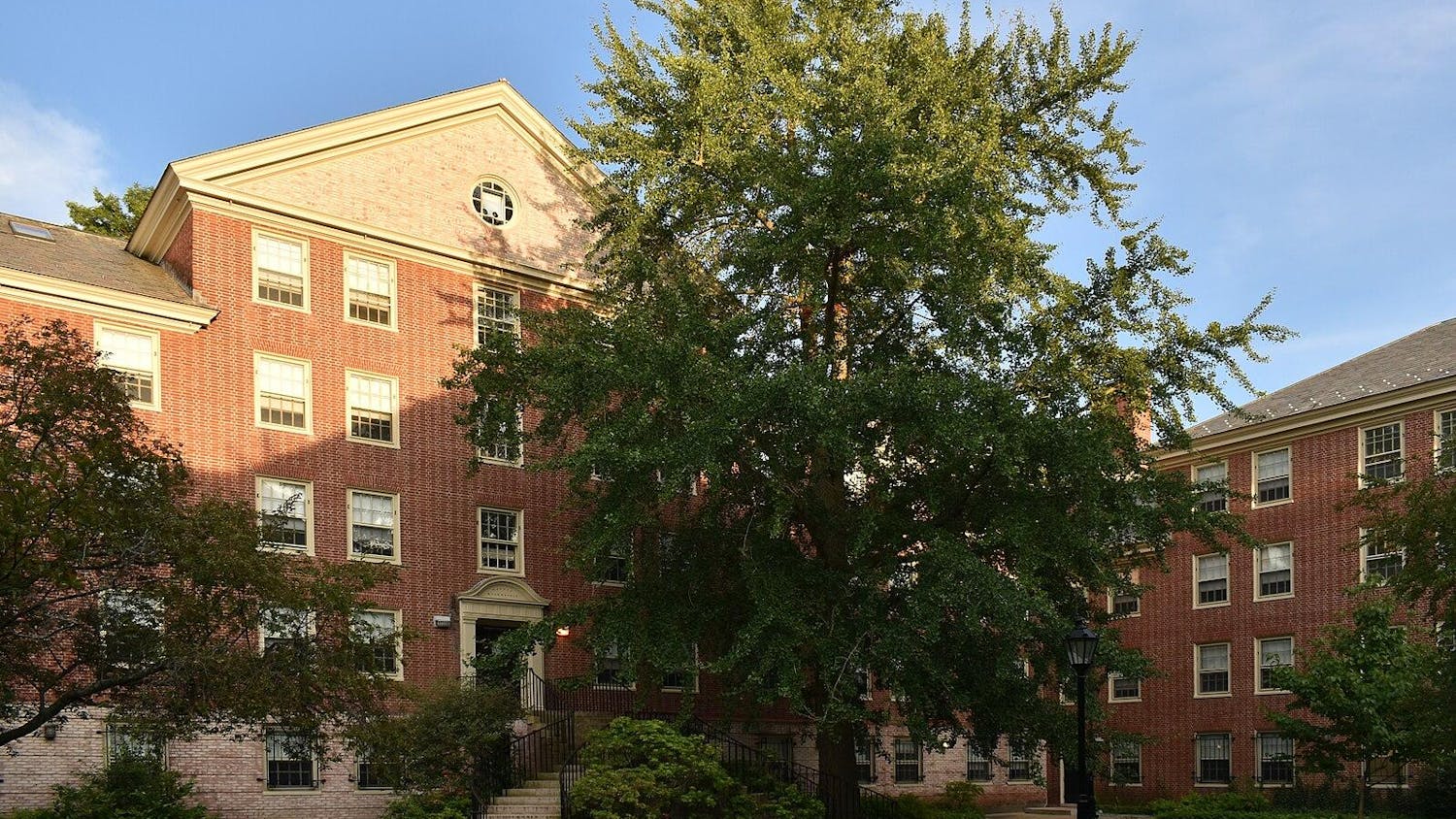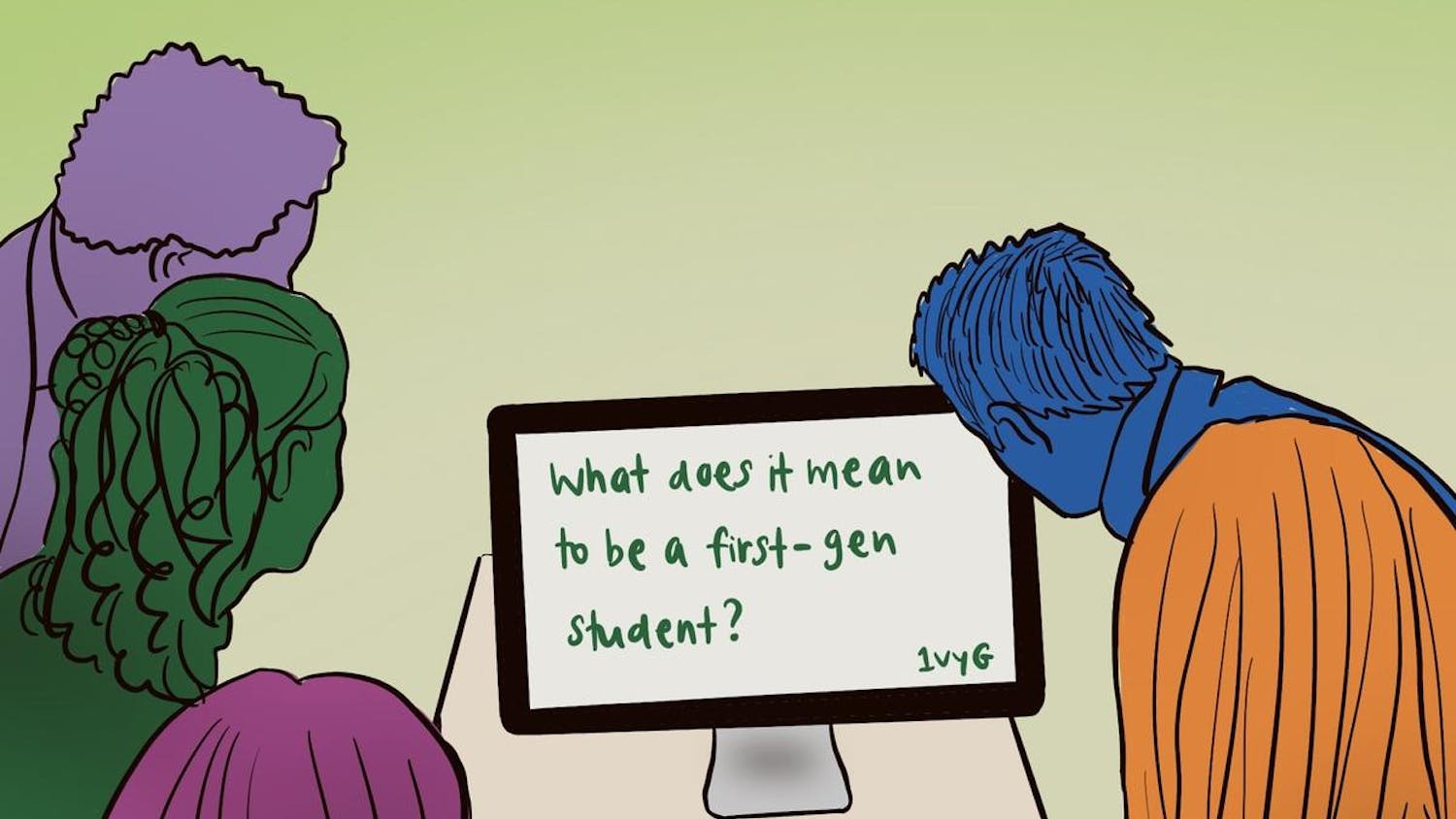The percentage of undergraduates receiving bachelor of science degrees has nearly doubled from 2003 to 2012 as the number of humanities and social sciences concentrators has continued to decline over the past ten years.
The percent of Sc.B. degrees spiked to 31 percent in 2012 compared to 17 percent in 2003. This uptick reflects a gradual increase over the past ten years - while students completed an average of 280 Sc.B. degrees per year between 2003 and 2007, the average climbed to 406 students over the past five years.
"If you're in a discipline that has a Sc.B. and (Bachelor of Arts degree option),students will often choose the Sc.B. because they think it looks better," said Dean of the College Katherine Bergeron. The shift accompanies a "creeping desire of people to enhance their credentials," she said.
Increase in life and physical sciences
The cumulative shift may be attributable to an increasing number of concentrators in the hard sciences overall, Bergeron said. An average of 17.4 percent of the total undergraduate population concentrated in the life sciences between 2003 and 2007, compared to 19.2 percent over the last five years. Averaged over the same periods, the percent of physical science concentrators went from 11.8 percent to 14.6 percent, while the average percent of humanities concentrators declined from 25.2 to 23.2 percent.
"The world is much more interconnected through science and technology than it used to be," which could draw more students to concentrate in the sciences, said Larry Larson, dean of the School of Engineering. Though what draws students to concentrate in the humanities versus the sciences is a "very complicated issue," he said.
Specific concentrations have also tended to attract more students in recent years.
Graduates of the engineering program, which has experienced a jump in concentrators in recent years, have had great success in the job market despite a struggling economy, Larson said.
The poor economy is also a likely cause for recent high enrollment in the economics department, said Roberto Serrano, chair of the economics department, though he added that explaining these trends can be difficult. The economics concentration has been the most popular for past three years, despite an overall decline in the number of social science concentrators over the past decade.
"There's a lot of students that come to economics that rightly perceive they'll be able to work and be able to use a good chunk of their economics education in the business that they work for," Serrano said. "A good economics student will be someone who has the capability to solve problems ... and that's a very valuable set of skills."
Students' growing interest in the financial sector has also contributed to the increase in the number of concentrators, he said.
"There's no question that in the financial sector there have been very lucrative jobs, so from the point of view of our students, it's a good job opportunity for them," he said. "I would very much hope that more students in economics became more interested in the economic science itself, in understanding exactly what are the economic problems of the world."
The increased number of economics concentrators has put a strain on the department's resources, Serrano said. The department has recently instituted caps on several upper-level classes and urged the University to hire more professors in order to combat a rising student-professor ratio. While new math requirements recently introduced to the program are expected to decrease the number of concentrators, Serrano said he expects the concentration to remain popular.
"This is not just at Brown, but a national trend," he said. "More students want to come to economics to get a better understanding of what's going on in the world."
A declining number of humanities concentrators is also the trend nationwide, sources said.
"I feel like there's a lot of hand-wringing about this (trend)," Bergeron said. "Brown is a great place to study humanities and arts, and there's a long history of excellence in the humanities."
On the opposite end, increasing the number of students majoring in the hard sciences in the U.S. has been an interest for some educators and leaders in business and government, said Richard Morrill '61, president of the Teagle Foundation and former president of the University of Richmond.
"America doesn't graduate as many students in STEM fields - science, technology, engineering and mathematics - than many other industrial countries around the world, and that has been a source of concern" for some who want the U.S. to remain competitive in scientific advancement, he said.
Decline in humanities and social sciences
The history department has seen a comparatively substantial decline in its average number of concentrators over the last ten years, going from 166 in 2003 to 72 in 2012. A sharp drop in the number of concentrators in 2008 could be a result of the increase in the number of classes required by the department, Nancy Jacobs, former director of undergraduate studies in the Department of History, told The Herald in 2010.
"We live in a very presentist world," said Kenneth Sacks, chair of the history department. "People now are in charge of their own history." The popularity of social media and resources like Wikipedia has influenced how people approach the study of history, he said.
The department is currently undergoing a self-evaluation to investigate these trends and understand how it can attract more concentrators. "We'd like to do anything we can to make history more appealing," Sacks said.
Enrollment in non-language classes within the classics department have also faced a significant decline over the last decade, said Joseph Pucci, associate professor of classics and comparative literature. Outreach classes, courses specifically targeted to non-concentrators, have been impacted the most. Enrollment in the traditionally popular CLAS0900: "Greek Mythology" has decreased by half since the 1990s, he said.
Still, Pucci said that the number of classics concentrators remains "extremely healthy." Brown has by far the largest number of classics concentrators of any Ivy League school and has been a historically strong and renowned program, he said. The number of classics concentrators has only varied slightly over the last 10 years, with the lowest being 22 in 2006 and the highest 34 last year.
The department's outreach program, which has sought to attract high school students studying classics to Brown since the mid-90s, has also kept concentratio
n numbers robust, he said.
Pucci said the overall decline in humanities enrollment and concentration numbers may reflect conscious decisions on the part of the University. When the University decided to grow the faculty by 25 percent as part of Ruth Simmons' Plan for Academic Enrichment in 2002, the majority of hires were not humanists, and there has been an effort to get more students interested in the sciences, he said.
The University is currently working to strengthen the humanities and facilitate faculty collaboration through the Humanities Initiative, Bergeron said. Harvard has also formed an Arts and Humanities Curriculum Committee that is currently looking to institute a new interdisciplinary humanities concentration.
Interdisciplinary education has always been a hallmark of a Brown education, Bergeron said.
Preparing for life after Brown
Morrill said the liberals arts background he built at Brown as a history concentrator prepared him for a career as a college president that has demanded skill in many fields.
"I've had to learn everything about budgets and finance and accounting leadership and labor law and construction, and it's not ever been difficult to do those things because at Brown I fell in love with learning," he said.
Despite changes in overall concentration trends at Brown, Larson said that students still continue to take a wide breadth of courses across divisions.
"We have a lot of students in science who come here because they're really interested in merging their interests in humanistic study with their studies in science," Bergeron said.
A study conducted in 2008 found that science concentrators often take two or more non-required classes in the humanities.
Jacob Buckley '15, who is proposing bioethics as an independent concentration and plans to receive a bachelors of science in neuroscience, has always favored the sciences, but he said he thinks considering the arts as the opposite of the sciences is a mistake. Having a background in the humanities can help those in the sciences to better communicate their ideas, he said.
Bergeron said that though students may be drawn to concentrations they regard as more practical, employers - even ones like Goldman Sachs - are often attracted to candidates who have strengths that are typically developed by studying the humanities.
A particular course may also influence a student's choice in concentration. Ezra Lichtman '15 said he became interested in the neuroscience concentration after taking NEURO 0010: "Introduction to Neuroscience" during fall semester of his freshman year.
"Nothing really drew me away from doing a humanities concentration - it just never seemed like something I could pull off," he said, adding that the sciences have always been more innately interesting to him, and the material has come slightly easier. But the opportunity to take classes in the humanities was one of the reasons he wanted to go to a liberal arts school, he said.
"The powers of mind that are developed through liberal education are tremendously practical, but you do have to go through a translation process to make the connection with specific professional opportunities," Morrill said.
Through 25 years at Brown and two decades of advising, Pucci said he has found the relationship between a student's concentration and their employability to be "virtually meaningless," with the exception of certain pre-professionally oriented programs like pre-med and engineering.
Declining enrollment in the humanities is not necessarily bad, Pucci said. "Humanists do want our courses peopled, of course, but the business of the humanities is I think better suited to smaller classes," he said.
Still, faculty agreed that a significant decline in student interest in the humanities would be a serious concern.
"It is possible that now more students, perhaps because of their own thinking, perhaps influenced by their parents, think humanities are a waste of time," Serrano said. "If that's the case, that's a sad development for humanity," he said.
There is a trend in society at large that tends to fund the sciences much more than the humanities, Serrano said, and the government will always fund more grants to the hard sciences.
Continuing a discussion on how to best balance priorities is paramount, Bergeron said.
"That's education," she said. "Finding new ways to talk about what is important in the liberal arts."




